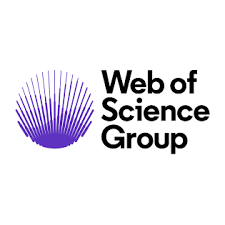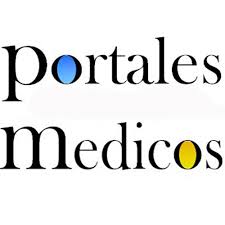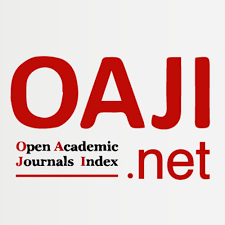Evaluando la eficacia y seguridad de la técnica de adipoestructuración facial: a propósito de una serie de casos
Resumen
DOI: https://doi.org/10.53766/AcBio/2023.13.25.04
La adipoestructuracion facial es una técnica encaminada a la estructuración y organización celular de los panículos adiposos faciales a partir de la estimulación mecánica vectorial, definida por Velazco G. de la siguiente manera: “La adipoestructuración facial se define como una técnica encaminada a la reorganización paniculopática de los compartimientos grasos faciales en función a su estructura, fisiología y biomecánica, sin extraerlos en ninguna circunstancia”. Se propone un estudio en un período comprendido entre Abril – Julio del 2021, controlado con tratamiento diferido de tres sesiones, diseñado para evaluar la seguridad y la eficacia de la técnica de adipoestructuración facial, 25 pacientes femeninas entre 40 y 55 años fueron evaluadas se les sometió a tres sesiones con intervalos de cada 15 días, y posteriormente se llevó a cabo un seguimiento de rutina para seguridad y eficacia cada 30 días durante 6 meses. La seguridad fue medida de la siguiente manera: los sujetos evaluaron su dolor en el lugar del tratamiento después de cada aplicación en una escala analógica visual (EVA) de 100 mm. Durante 14 días después de cada visita de tratamiento, los sujetos registraron la naturaleza, la gravedad y la duración de cualquier evento local en el lugar de la aplicación en un diario de respuestas comunes al tratamiento (RCT) de 14 días. Cualquier trastorno persistente en el punto de tiempo de 14 días se consideró automáticamente un efecto adverso. Según lo evaluado por utilizando GAIS, el grado de mejora estética en la semana 8 después de la última sesión fue significativamente importante (92,5 %). Después de la semana 20, las mejorías valoradas con el GAIS seguían siendo visibles en el 76,9 % de los sujetos. La proporción de sujetos satisfechos con el tratamiento alcanzó un máximo del 91,8 % en la semana 4 y fue del 74,3 % en la semana 24. La adipoestructuración facial representa una modalidad efectiva y segura de abordaje terapéutico para mejorar las condiciones del envejecimiento facial, representando una alternativa que condiciona la recuperación de las condiciones biomecánicas de los compartimientos adiposos faciales en beneficio de la creación de mayores fuerzas antigravitatorias en los tejidos.
Recibido: 3/12/2022
Aceptado: 4/2/2023
Palabras clave
Texto completo:
PDFReferencias
Gupta MA, Gilchrest BA. Psychosocial aspects of aging skin. Dermatol Clin. 2005;23(4):643-648.
Reilly MJ, Tomsic JA, Fernandez SJ, Davison SP. Effect of facial rejuvenation surgery on perceived attractiveness, femininity, and personality. JAMA Facial Plast
Surg. 2015;17(3):202-207.
Swift A, Liew S, Weinkle S, Garcia JK, Silberberg MB. The Facial Aging Process From the "Inside Out". Aesthet Surg J. 2021 Sep 14;41(10):1107-1119.
Cotofana S, Fratila AA, Schenck TL, Redka-Swoboda W, Zilinsky I, Pavicic T. The Anatomy of the Aging Face: A Review. Facial Plast Surg. 2016 Jun;32(3):253-60.
Farkas J P, Pessa J E, Hubbard B, Rohrich R J. The science and theory behind facial aging. Plast Reconstr Surg Glob Open. 2013;1(01):e8–e15.
Glasgold R, Glasgold M, Lam S. Berlin, Heidelberg: Springer; 2018. Complementary fat grafting; pp. 321–332.
Rohrich R JPJ, Pessa J E.The fat compartments of the face: anatomy and clinical implications for cosmetic surgery Plast Reconstr Surg 2007119072219–2227., discussion 2228–2231.
Velazco Viloria, G. J. Adipoestructuracion facial. Acta Bioclínica 2020, 10(20).
Sakata A et al. Relationship between the retinacula cutis and sagging facial Skin. Skin Res Technol. 2017;1–6.
Tsukahara K, Tamatsu Y, Sugawara Y, Shimada K. The relationship between wrinkle depth and dermal thickness in the forehead and lateral canthal region. Arch Dermatol. 2011;147(7):822-828.
Nash LG, Phillips MN, Nicholson H, Barnett R, Zhang M. Skin ligaments: regional distribution and variation in morphology. Clin Anat. 2004;17(4):287-293.
Alkhouli N, Mansfield J, Green E, et al. The mechanical properties of human adipose tissues and their relationships to the structure and composition of
the extracellular matrix. Am J Physiol Endocrinol Metab 2013;305(12):E1427–E1435.
Kruglikov I, Trujillo O, Kristen Q, Isac K, Zorko J, Fam M, Okonkwo K, Mian A, Thanh H, Koban K, Sclafani AP, Steinke H, Cotofana S. The Facial Adipose Tissue: A Revision. Facial Plast Surg. 2016 Dec;32(6):671-682.
Ezure T, Amano S. Negative regulation of dermal fibroblasts by enlarged adipocytes through release of free fatty acids. J Invest Dermatol 2011;131(10):2004–2009.
Ezure T, Amano S. Increment of subcutaneous adipose tissue is associated with decrease of elastic fibres in the dermal layer. Exp Dermatol 2015;24(12):924–929.
Sherratt MJ. Tissue elasticity and the ageing elastic fibre. Age (Dordr) 2009;31(4):305–325.
Ezure T, Hosoi J, Amano S, Tsuchiya T. Sagging of the cheek is related to skin elasticity, fat mass and mimetic muscle function. Skin Res Technol 2009;15(3):299–305.
Cotofana S, Schenck TL, Trevidic P, et al. Midface: Clinical anatomy and regional approaches with injectable fillers. Plast Reconstr Surg. 2015;136(Suppl):219S–234S.
Gierloff M, Sto¨hring C, Buder T, Gassling V, Ac¸il Y, Wiltfang J. Aging changes of the midfacial fat compartments: A computed tomographic study. Plast
Reconstr Surg. 2012;129:263–273.
Gierloff M, Sto¨hring C, Buder T, Wiltfang J. The subcutaneous fat compartments in relation to aesthetically important facial folds and rhytides. J Plast
Reconstr Aesthet Surg. 2012;65:1292–1297.
Pessa JE. SMAS fusion zones determine the subfascial and subcutaneous anatomy of the human face: Fascial spaces, fat compartments, and models of facial aging. Aesthet Surg J. 2016;36:515–526.
Pezeshk RA, Stark RY, Small KH, Unger JG, Rohrich RJ. Role of autologous fat transfer to the superficial fat compartments for perioral rejuvenation. Plast Reconstr Surg. 2015;136:301e–309e.
Pilsl U, Anderhuber F. The septum subcutaneum parotideomassetericum. Dermatol Surg. 2010;36:2005–2008.
Pilsl U, Anderhuber F. The chin and adjacent fat compartments. Dermatol Surg. 2010;36:214–218.
Mertens A, Foyatier JL, Mojallal A. Quantitative analysis of midface fat compartments mass with ageing and body mass index, anatomical study. Ann Chir Plast
Esthet. 2016;61:798–805.
Mendelson BC, Jacobson SR. Surgical anatomy of the midcheek: Facial layers, spaces, and the midcheek segments. Clin Plast Surg. 2008;35:395–404; discussion 393.
Lambros, V. Personal communication. July 2006.
Dulguerov N, D’Souza A. Update on treatment rationale and options for the ageing face. Curr Opin Otolaryngol Head Neck Surg 2011; 19: 269-275.
Owsley JQ, Roberts CL. Some anatomical observations on midface aging and long-term results of surgical treatment. Plast Reconstr Surg 2008; 121: 258-268.
DOI: https://www.doi.org/10.53766/AcBio/Se encuentra actualmente indizada en: | |||
 |  |  | |
  |  |  |  |
 |  |  |  |
 |  |  | |
![]()
Todos los documentos publicados en esta revista se distribuyen bajo una
Licencia Creative Commons Atribución -No Comercial- Compartir Igual 4.0 Internacional.
Por lo que el envío, procesamiento y publicación de artículos en la revista es totalmente gratuito.




